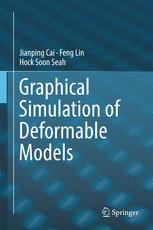

Most ebook files are in PDF format, so you can easily read them using various software such as Foxit Reader or directly on the Google Chrome browser.
Some ebook files are released by publishers in other formats such as .awz, .mobi, .epub, .fb2, etc. You may need to install specific software to read these formats on mobile/PC, such as Calibre.
Please read the tutorial at this link: https://ebookbell.com/faq
We offer FREE conversion to the popular formats you request; however, this may take some time. Therefore, right after payment, please email us, and we will try to provide the service as quickly as possible.
For some exceptional file formats or broken links (if any), please refrain from opening any disputes. Instead, email us first, and we will try to assist within a maximum of 6 hours.
EbookBell Team

4.7
86 reviewsThis book covers dynamic simulation of deformable objects, which is one of the most challenging tasks in computer graphics and visualization. It focuses on the simulation of deformable models with anisotropic materials, one of the less common approaches in the existing research. Both physically-based and geometrically-based approaches are examined.
The authors start with transversely isotropic materials for the simulation of deformable objects with fibrous structures. Next, they introduce a fiber-field incorporated corotational finite element model (CLFEM) that works directly with a constitutive model of transversely isotropic material. A smooth fiber-field is used to establish the local frames for each element.
To introduce deformation simulation for orthotropic materials, an orthotropic deformation controlling frame-field is conceptualized and a frame construction tool is developed for users to define the desired material properties. The orthotropic frame-field is coupled with the CLFEM model to complete an orthotropic deformable model.
Finally, the authors present an integrated real-time system for animation of skeletal characters with anisotropic tissues. To solve the problems of volume distortion and high computational costs, a strain-based PBD framework for skeletal animation is explained; natural secondary motion of soft tissues is another benefit.
The book is written for those researchers who would like to develop their own algorithms. The key mathematical and computational concepts are presented together with illustrations and working examples. It can also be used as a reference book for graduate students and senior undergraduates in the areas of computer graphics, computer animation, and virtual reality. Academics, researchers, and professionals will find this to be an exceptional resource.